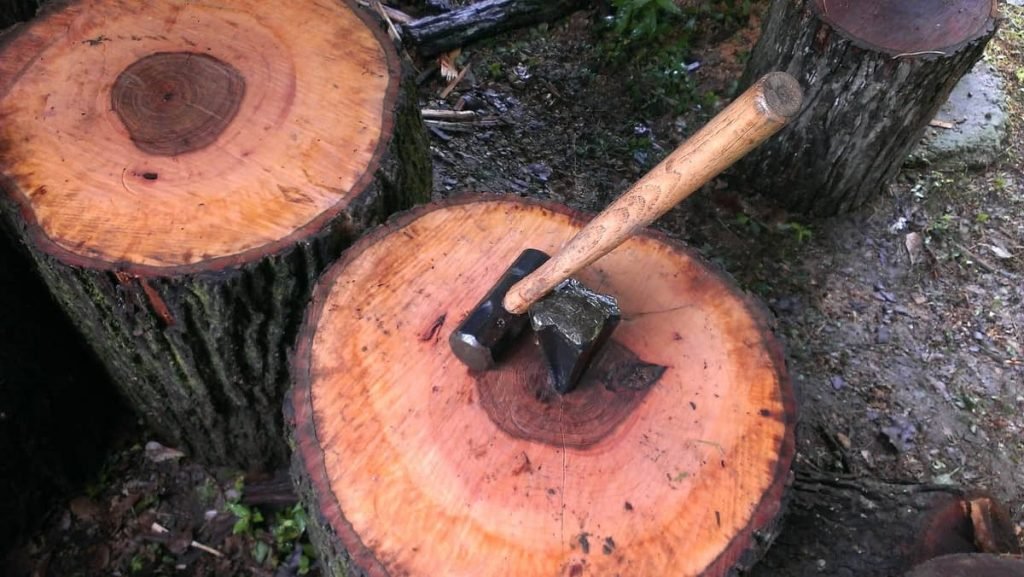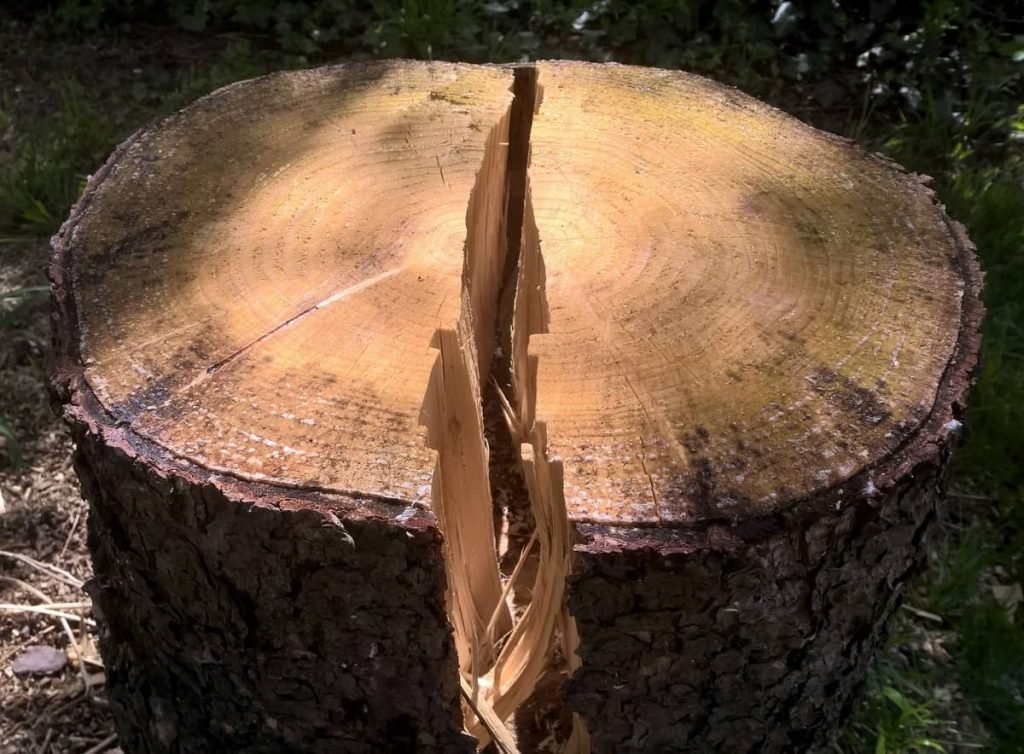If you have trees on your property, you’ll probably end up having to fell one or two once in a while. And the logs you get can be great for firewood. And if it’s more than you need for yourself, you might even make a few bucks off of it! But first, you have to split the wood into usable pieces.
Splitting logs isn’t easy. From The Magnificent Seven to Rocky IV to Avengers: Age of Ultron, films have used it to highlight strength and hard work. It’s a great workout!
But doing it effectively, safely, and efficiently takes a bit of know-how. And we’ll help you learn how.
Wood Splitting Tools
The first step in any project is to have the right equipment. Chopping wood doesn’t require a long list of supplies, but you do need quality ones.
Of course, you need to have your wood cut into logs before splitting it. A foot to 18 inches is a good length. But with good splitting technique and quality tools, you should be able to split logs up to about 2 feet high.
You can chop wood in two ways: with an ax or with a wedge. You may choose to use both, but you can also do the job with one or the other.
Tools:
- Axe. A wood-chopping axe has a blade on one side and a thick head near the handle. These are also called “mauls.”
- Sledgehammer
- Wood splitting wedge
- Chopping block or a stump to chop on
The thick side of the ax or wedge is going to help split the wood more easily. The taper will help push the wood apart. So be sure to get the right tools for the job. You want that pronounced triangular shape in both of these implements.!
Safety Equipment:
- Goggles/safety glasses
- Gloves
Loosen Up
Extended wood splitting can tax your muscles. To help lessen the potential for injury and lessen soreness, we suggest stretching before you start the job. This is a good idea before any yard work! But for this task, it’s even more important.
Do something to warm up and stretch out your arms, back, and legs. You’ll be asking a lot of the muscles in all those regions!

Choosing Where To Chop
You don’t want to try splitting logs just anywhere. You need to find a suitable surface that’s stable and strong.
If the tree stump is high enough and the top is level, it’s perfect to use as a chopping block. Otherwise, use a log that has a wider diameter than the one you’re splitting.
The chopping block should be at least a foot to 18 inches high itself. This allows you to generate more speed on your downswing without having to bend over.
Before the first chop, size up the log you’re cutting. Look for pre-existing splits that you can take advantage of. Try to avoid chopping through knots; these spots are thicker wood. Also, always cut the piece in half. If needed, then cut each half in half again. You can continue to split it until it gets to a manageable size for your needs.
Using An Ax
Once your log is on the chopping block, it’s time to start swinging.
Before that first swing, though, double-check to make sure the ax head is firmly attached to the handle. Always better safe than sorry, and continued use can naturally work it loose.
To swing your ax, place your “offhand” near the bottom of the handle. Use your strong hand to grasp it near the head. No need to hold it tight; you want this hand to glide along the handle.
Square up to the log you’re cutting. Hollywood may show actors with one foot forward – but that’s so they can get a better shot of the star’s face. It’s not the best way to chop, though. If you face the log head-on, you’ll generate more force as you bring the ax down. And that makes the work go more quickly and easily.
Lift the ax back overhead, and allow your dominant hand to slide down the handle as you swing forward. Your dominant hand guides the ax to its target. Let the ax itself do most of the work. Its weight and momentum can do more than your strength.
If the ax gets stuck in the log, you can try to pry it out. If it’s wedged too deeply, try using your sledgehammer to drive it through. With practice, you’ll be splitting most pieces with one swing, though.
Using A Wedge And Sledgehammer
The technique for a wedge with a sledgehammer isn’t all that different than using an ax.
If there is already a crack in the log, use that as a starting point. You may have to use a few solid “taps” to get the wedge well-seated before you can take a full swing at it.
If there is no place to seat the wedge, it can help to take a swing with the ax first. If not, you’ll have to create the spot by “gently” tapping it into place. Slightly offset from the center is best.

Finishing The Job
Once you have logs in the size you want, you’ll want to stack them and allow them to dry. Now that it’s in smaller pieces and the air reaches more surface area, it will be ready for the firepit sooner!
Cleaning your tools is also important. Naturally, your ax and wedge – and even your sledgehammer – are going to get tree sap on them. Before putting the tools away, it’s always a good idea to clean them!
Start with a rag or paper towel to remove chips of wood, grass, or other particles. After that, dampen the rag with paint thinner or another solvent. Wipe the blade off – be sure to get the whole thing!
Got sap on your clothes or hands? Here’s how to get it out!
Conclusion
Once you chop that tree down, it’s time to chop it up! You can use the wood for your fireplace or fire pit, give it away, or even sell it. Splitting wood is a good workout; you’ll likely be sore the next day. But with a little practice, you’ll quickly master this skill.









